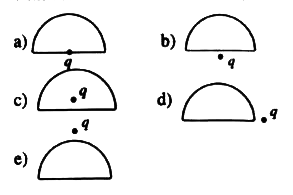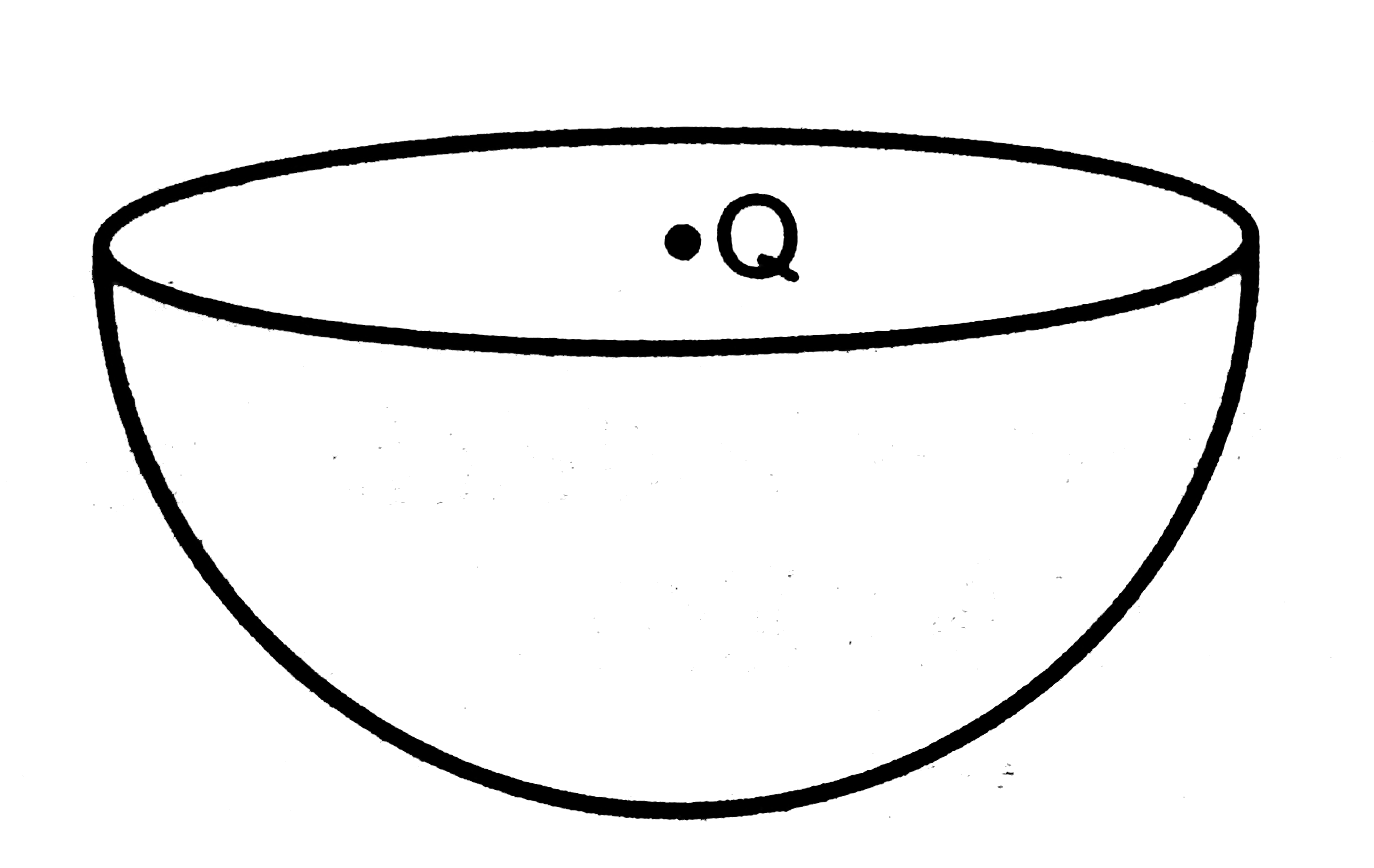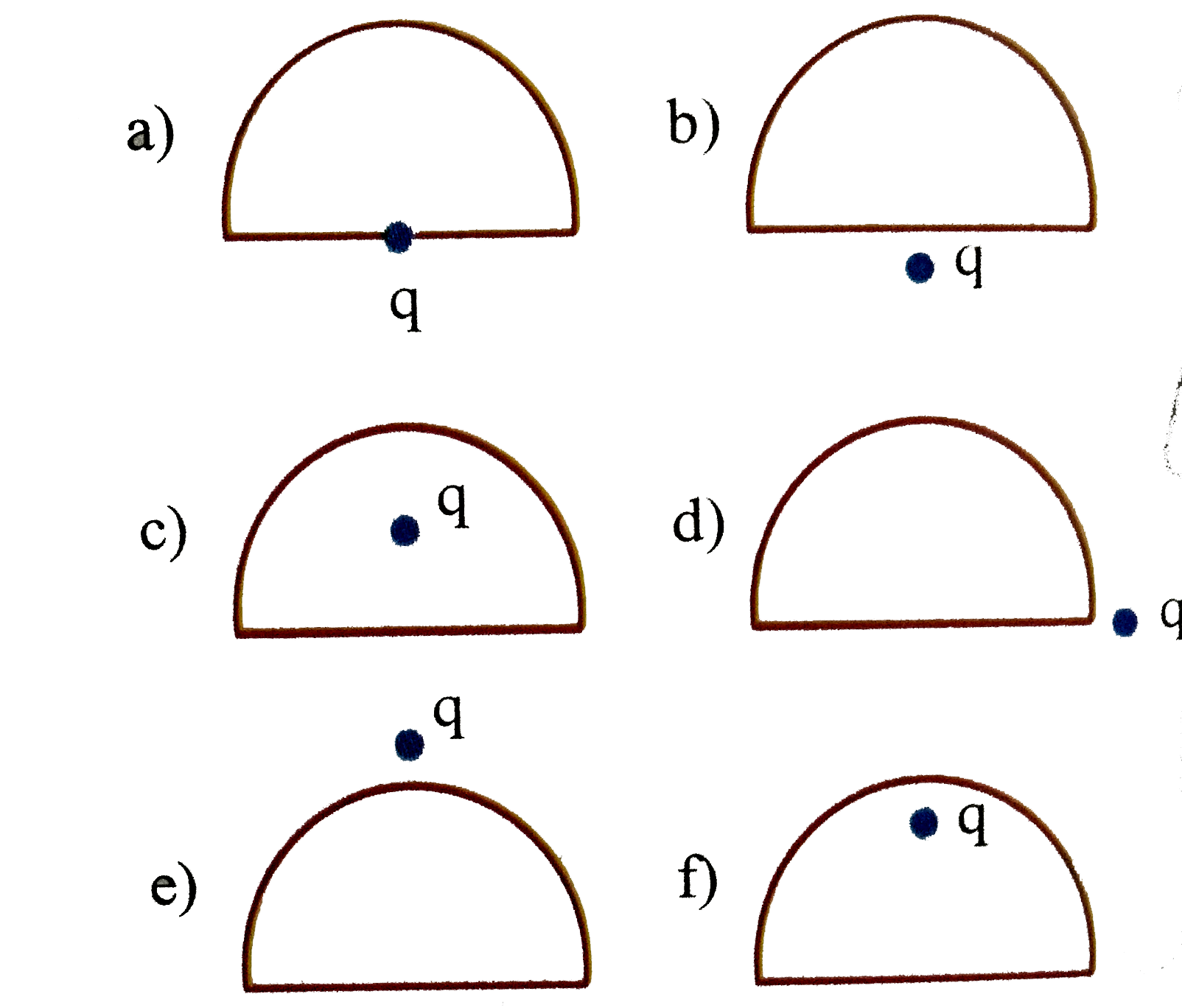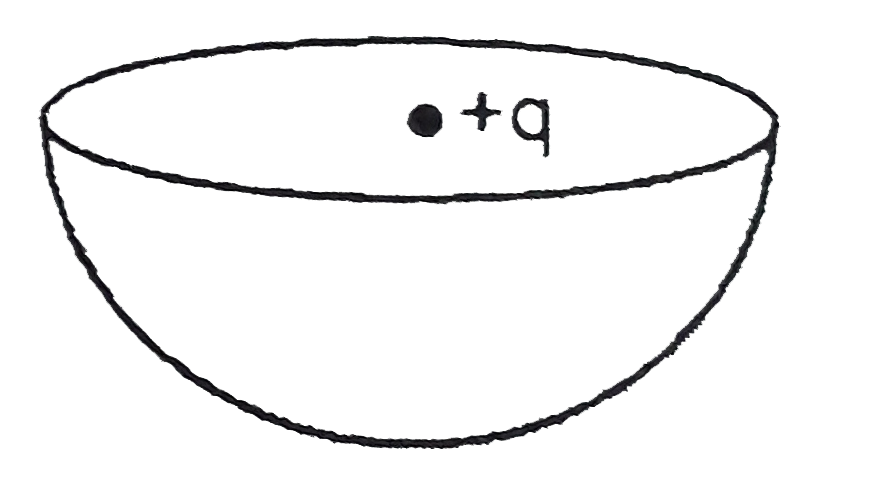Find the total flux due to charge q associated with the given hemispherical surface
 Solution in Telugu
Solution in Telugu
(a) q2∈0, (b) 0, (c ) q∈0, (d) 0 (e )0
(a) 0, (b) q2∈0, (c ) 0, (d) q∈0, (e )0
(a) q2∈0, (b) q∈0, (c ) 0, (d) q∈0 , (e ) 0
(a) 0, (b) q2∈0, (c ) 0, (d) q∈0, (e ) q∈0
The correct Answer is:A
Step by step video, text & image solution for Find the total flux due to charge q associated with the given hemispherical surface by Physics experts to help you in doubts & scoring excellent marks in Class 12 exams.
Updated on:21/07/2023Topper's Solved these Questions
- ELECTRIC CHARGES AND FIELDSBOOK - AAKASH SERIESCHAPTER - ELECTRIC CHARGES AND FIELDSEXERCISE - Exercise-II
56 Videos
- ELECTRIC CHARGES AND FIELDSBOOK - AAKASH SERIESCHAPTER - ELECTRIC CHARGES AND FIELDSEXERCISE - Practice Exercise
57 Videos
- ELECTRIC CHARGES AND FIELDSBOOK - AAKASH SERIESCHAPTER - ELECTRIC CHARGES AND FIELDSEXERCISE - Assess Your Self
13 Videos
- DUAL NATURE OF RADIATION AND MATTERBOOK - AAKASH SERIESCHAPTER - DUAL NATURE OF RADIATION AND MATTEREXERCISE - PRACTICE EXERCISEX
44 Videos
- ELECTRIC FIELD AND POTENTIALBOOK - AAKASH SERIESCHAPTER - ELECTRIC FIELD AND POTENTIALEXERCISE - PROBLEMS (LEVEL-II)
32 Videos
Similar Questions
How many electrons must be removed from a piece of metal to give it a positive charge of 1.0×10−7C
View SolutionWat is the charge acquired by a body when one million electrons are transferred to it.
View SolutionUsually it is the negative charge that is transferred when two bodies are rubbed together. Can you explain why?
View SolutionTwo separate monochromatic light beams A and B of the same intensity are falling normally on a unit area of a metallic surface. Their wave lengths are λA and λB, respectively. Assuming that all the incident light is used in ejecting the photoelectrons the ratio of the photoelectrons from the beam A to that from B is :
View SolutionA metal sphere with its centre at A and radius R has a charge 2q on it. The field at a point B outside the sphere is E. If another metal sphere of radius 3R and having a charge -3q is placed with its centre at point B, find out the resultant electric field at a point mid way between A and B.
View SolutionA charge Q is placed at the centre of an inaginary hemispherical surface. Using symmetry arguments and the Gauss's law, find the flux of the electric field due to this charge through the surface of the hemisphere (figure ).

View SolutionFind the total flux due to charge qassociated with the given hemisphercal surface

View SolutionA point charge Q is placed at the centre of a hemisphere. Find the electric flux passing through flat surface of hemisphere.
View SolutionA point charge Q is placed at the centre of a hemisphere. Find the ratio of electric flux passing through curved andplane surface of the hemisphere.
View SolutionA point charge +q is placed at the centre of curvature of a hemisphere. Find flux through the hemispherical surface.

View SolutionA charge 'Q' is placed at the centre of a hemispherical surface of radius 'R'. The flux of electric field due to charge 'Q' through the surface of hemisphere is
View SolutionFind the total flux due to charge q associated with the given hemispherical surface
View SolutionSurface subtends a solid angle of pi on a point charge +q. Electric flux due to point charge, associated with the given surface, is
View SolutionCharge q is inside a hollow cylinder. If flux associated with its curved surface B is ϕ, then flux associated with surface A is ......

View SolutionA charge Q is placed at the centre of an inaginary hemispherical surface. Using symmetry arguments and the Gauss's law, find the flux of the electric field due to this charge through the surface of the hemisphere (figure ).

View Solution